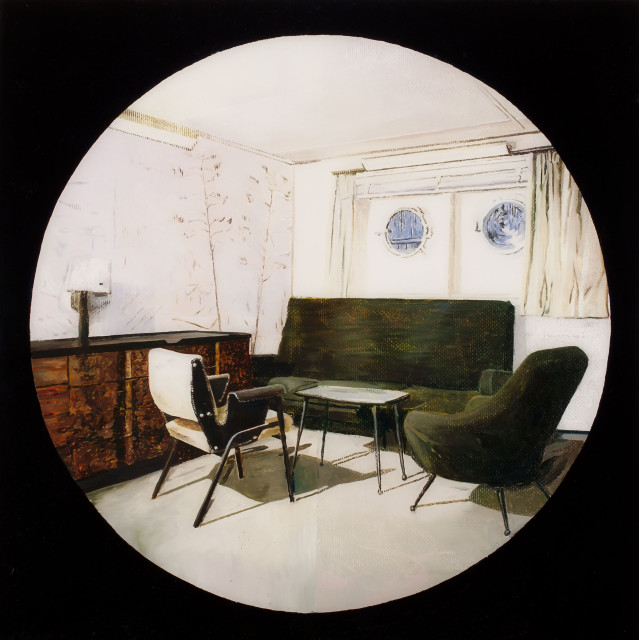Cortesão’s paintings are an exercise in deconstruction; both in medium and content. A dedication towards subject and matter, artistically and ideologically. The artist takes apart the modernist utopia of the last century layer after layer: a discursive framework that breaks genres and transcends continents is excavated: culture versus nature, form following function, the absolute embracing the particular.
“Coming Home” marks an important point in the artist’s oeuvre, a culmination of experiences collected in the course of his artistic endeavors. When Cortesão was born in 1967, the architectural experiments regarding the utopian ideals of an alternative city were already in process. Shortly thereafter, these dreams vanished. They left behind only traces, covered in dust and abandoned, requiring the tools and patience of an archaeologist to rediscover and reconstruct. Cortesão has taken up this task with dexterity, brush in hand and chisel in mind.
“I am fascinated by those spaces because they are familiar to me in the sense that they still existed when I was a child, and yet I feel like they belong to the past”, Cortesão stated in an interview in 2009. “That which was probably futurist at that time, now seems retro-futurist or even just obsolete”.
The process of excavation is transferred into Cortesão’s work with all its consequences. By using the technique of “reverse glass painting”, the paradigms of painting need to be reconsidered. What is usually applied last, has to be done first when painting on glass, thus altering the whole process irreversibly. Opposing the softness of a regular canvas, neglecting the texture and olfactory qualities of the medium, Cortesão’s Plexiglas technique encourages a distance, and focuses on atmospheres instead of narratives. This “structural denial” of painting turns into one of its strongest advocates. His choice of subjects work along these lines naturally. By choosing “found footage” from magazines and books from the 60’s and 70’s, the concept of a “mediated reality” is empathized. A sort of very elastic, yet neutral structure, constantly oscillating between desire and destruction.
“A ‘hygienic’ appearance, the occultation of the texture of the work and of the manual work through a transparent surface, a kind of translucent skin which also acts as a distancing element.” These are the pragmatic qualities of Plexiglas that fascinate Cortesão, and that also explain his choice in a more metaphorical sense: “Like the mirror of an automobile, it establishes an almost invisible limit, an illusory effect of tranquility, between the interior and the exterior.”
“Coming Home” is per definition a very intimate affair, and like every end, the start of a beginning. Cortesão’s hermeneutic approach allows us merely to catch a glimpse of a body of work in progress, like a freeze frame of a movement in flux. With one of the last great narratives as a subject and an absolutely unique technical approach that totally neglects the foundations of traditional painting, the viewer is becoming part of the plan naturally. Visual footnotes and hints scattered all over, little swirls and dots of paint as entry points, the view within that view that emerges, this distinctive atmosphere: “Coming Home” is going beyond.
Cortesão’s works are in various prestigious public and private collections worldwide:
MUDAM- Musée d’art Moderne Grand-Duc Jean, Luxembourg
MACE - Museu de Arte Contemporânea de Elvas, Portugal
Foundation Calouste Gulbekian, Lisbon
Museu da Cidade, Lisbon

